We recently hosted a webinar with Mercuri UK MD Barry Hilton, Anne Ashworth from Pearson UK and Ben Turner from the Association Professional Sales sharing insights around remote learning:
Ben Turner: Good morning sales professionals, sales managers and of course, sales leaders. My name is Ben Turner from the Association of Professional Sales. Welcome to this morning’s webinar, we are as usual, delighted to have your company this morning. There’s lots going on in your world, whether that’s sales activity or non-sales activity. We’re humbled that you’ve decided to take this time to learn and spend some time with the APS listening to some fantastic content with Mercuri and Pearson UK.

Focus on remote learning

You will see that we have two guests on the webinar this morning. Our colleague and friend, Barry Hilton from Mercuri International. Mercuri are an absolutely fantastic partner of the APS, they’re an approved training organization. Barry is a fellow of the APS and they’re an organization that we trust fully when we talk about different things that are moving in the sales world. It’s a delight to have Mercuri. They’ve also been real pioneers and helped us when we developed the Level 4 sales apprenticeship. To have their insight around what’s going on in that world is absolutely fantastic.

I’d also like to introduce Anne Ashworth, Anne is Head of Employee Apprenticeships at Pearson. Again, Anne is someone that we’ve known for a long time, and seen the learning and the expertise that Anne has not just in terms of apprenticeship, but in the L&D world. I’m really looking forward to Anne’s insight on today’s webinar as well.
How remote learning will keep you competitive
Barry Hilton: Good morning Ben, and thanks very much for the introduction. Good morning everyone, and welcome, thanks for joining us this morning. This webinar is actually going to focus on how remote learning will keep salespeople competitive, and it aims to provide four things:
- Insight into what’s actually changing out there right now.
- A chance to consider what those changes mean for you. If you’re a salesperson or if you’re a sales leader or if you’re an HR partner or if you’re an L&D specialist who supports learning, this is a chance to consider some of those changes.
- The expert view, which we’ll get from Anne and through some of the questions that you will give us this morning.
- Finally some takeaways, if you want to do something different as a result of investing this 30 minutes this morning, then do it and maybe take some of the advice that we’re offering today.
What does the new busy and successful look like if you’re a salesperson?

Well, let’s have a look at what it doesn’t look like. It doesn’t look like this, it doesn’t look like a day of travelling to see two customers who might have given you the business anyway. This is something that’s pretty typical if you’re a salesperson on the road in the UK, maybe not in this current period, but generally.
“Depending on who you listen to, the average sales visit may cost between £200 and £400 to your company, so how much value is actually being driven out of that visit?”
Companies are now becoming very very aware of these issues, those issues are in corporate social responsibility, around environmental concerns, process efficiency, also cost management, and these are the realities of modern sales. If we now look at the personal dimension of this, waiting around for attendees who are late for meetings is neither professional nor efficient, and it doesn’t contribute to stress reduction. One of the things that we’ve noticed over the past months and years is the increasing focus within employers on mental well-being. This is now an essential part of any training and development that’s undertaken for salespeople.
60% of most buying journeys take place online
Traditional sales behaviors are being robustly challenged now within organizations and if you look at the way that selling is now undertaken, you’ll see that selling from literature is rapidly decreasing. 60% of most buying journeys now take place online, and before the salesperson ever gets involved in speaking with a buyer, the customer has done the research, they’ve probably done a price comparison, they’ve almost decided what to do before the salesperson actually gets involved in the process.
A value based approach

Things are moving from a product-based approach to a value-based approach, and that’s a word that’s used a lot sales, but it’s very often not understood. An easy definition of value is to consider value equalling the benefits minus the cost of the product or service, and this, focused on listening to the customer and sitting in a customer’s seat and looking at the offer that you put forward as an organization from the customers perspective is a much more realistic way to handle the sales process these days. There’s more selling in teams these days, there’s more selling using technology and less using transportation. Also the day of the lone wolf salesperson is pretty much over. This is a time of differentiation for salespeople by value rather than by product.

Coffee tourism and sales is a thing of the past, it never really worked anyway. It’s inefficient, it’s overrated, and kind of comfort zone behaviour for both salespeople and sales managers, particularly if you’re looking at having a high level of appointments. Very often, people will just fill the their dairies with coffee stops, and that is not actually generating any business.
Most buying decisions are now by consensus and statistics show that on average, 5.4 people or departments are involved in every buying decision. Professionalism amongst bias has taken the leap from the pub league to the premiership, and sales people have got to be match fit for that. How are they’re going to do that?
“Interestingly, it’s been proved that sales people on average have got about 24 minutes a day to learn. That’s a maximum, and the traditional methods of learning are really not going to work.”
A new type of learning
If you think about how it’s been done in the past, training programmes lasting three days are in decline, and technology is enabling a different kind of learning to be undertaken. Sales people are now actively challenged for themselves, they’re challenging the learning channels, the learning locations, the learning duration. Technology is now being used in learning in order to ensure that salespeople use technology within the sales processes. If you look at the focus of how we engage with salespeople, there’s four areas that are becoming predominant within learning collateral these days.
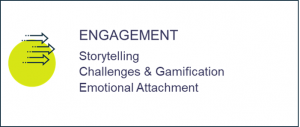
- Engagement with the leaner through storytelling, through challenges and gamification, and we’re going to show you a little example that in a second, and some emotional engagement to the topic.
- Also is it relevant? Generic theories are less powerful these days than they were in the past and there’s a lot of desire and drive towards customization. Understand the world that I work in, don’t just give me a generic concept to work with.
- Flexibility is very important and how you access the learning. Accessing it through devices whilst you’re on the move.
- Where’s the innovation in learning? People want to be stimulated, they want to be challenged, they want to see change within that learning environment.
A short interactive test
Now we’ve just prepared a very short segment of interactive learning to let you see. This comes from the Sales Executive Level 4 qualification. It’s a module about sales planning and understanding numbers. You can see here a little bit of information that would come up in front of a salesperson, giving them via a case study, some information to deal with about a particular territory and a particular salesperson.
Based on what you’ve just seen, what was the average order value for this territory salesperson, Celine’s territory last year?
Here’s a second question. What was the average order value from the key account customers that we saw earlier on Celine’s territory? And the answer to that, of course, is 1,744.41. This is just a very, very small example of how you can make something really important like the understanding of numeracy and sales a key part of the learning. That took us a couple of minutes to do. There were very relevant points there about portfolio management. That is just kicking into the spark that’s needed to take us to where we need to go.
Catalyst for change
I’ve tried to avoid using the dreaded word that we’re all experiencing right now that’s keeping us indoors, but in fact, that has proved to be only a catalyst and a change that was already taken place
“…because this is a year of new norms. Things will not go back to what they were before the lockdown.”
Organizations right now are looking at issues that they knew they had to look at anyway, which is how are sales undertaken. All of the old ways will be challenged and there’ll have to be new ways introduced.
That’s where we’re going to explore the topic now with Anne:
What are the learning trends that you’re currently seeing?
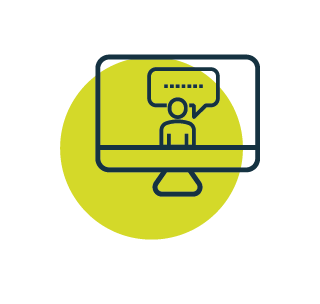
Anne: Thank you very much for inviting me to join you. Learning trends: I would say speed of transition at the minute is obviously a key one. It was something that was coming through as a key priority for learning organizations anyway. But that’s the hiatus, we have at the minute, it’s just made things even faster.
I think the quality of remote learning is also really important. One of the things that we as a huge learning organization that operates globally is that move to digital learning is just absolutely key. As you rightly said, we are moving away from paper-based. We’re seeing certainly a use of AI in our learning content as well, so we can totally personalize it. We build on the lessons that the learner is going through so that whatever comes up next is personalized to them. I think that’s absolutely the key.
I think the flexibility is important so that people can do bite-sized learning at times that are right for them. It’s also about not just skills that are needed now but the skills that are required for the future, so very much the development for soft skills. As you also called out, well-being, mental health, that whole piece around the holistic looking after of individuals is really important as well.
Digital learning: Do you believe that most organizations fully understand what that means or is it just a buzzword?
Anne: I think probably not. I think some organizations think it’s about putting hard copy learning content onto an online platform and then letting people download it. That is not how we see it at all.
“We see it’s very much an interactive element of our engagement with not just learners but also their trainers, their tutors, teachers if we’re talking about the educational setting.”
Of course, don’t forget we’ve got a huge range of different client groups that engage with learning, so you’ve got to make sure that you have equality and diversity built in to all of your product design and your delivery methods as well because you’re catering for all sorts of people. I think one thing that’s certainly come out of the hiatus at the moment is more mature people engaging with digital learning and how they do that and if it’s the first time they’ve done it. We need to ensure that what we have developed is fit for purpose for them as well as for our normal client group as well.
Barry: That’s really interesting. One of the things that I reflected on, knowing that we were going to have this discussion this morning, what are the actual changes that salespeople that are ahead of the curve right now, what are they doing? I think it’s a good benchmark for anyone that’s listening, to ask yourself or maybe ask your organization are they doing these things? Such as traveling less. I’m not talking about the current travel ban, but are they also taking a cold hard look at what output they get from the activity input?
I mentioned coffee tourism earlier on and just simply being out on the road seeing people is not going to equate to new business because you may well have got that business anyway. I think being more scientific and objective about customer selection and retention is also something that we’re seeing and see it’s questioning the state school and in terms of what we do every day. So just doing the same old, same old is just going to get you the same old results, so that has to change.
What have you seen, from your perspective at Pearson, in terms of people that are ahead of the curve, what are they doing?
“I’ll give you an example with the apprenticeships if I may. I mean clearly, the fact that we were all into remote working from home, where possible, has really changed the landscape of apprenticeship delivery. Where it was predominantly work-based orientated, as you’d expect but now, of course, you’ve got your delivery partners moving to remote learning.”
Those that were ahead of the game are absolutely doing a fantastic job. Those that were not geared up for that are putting it out there but the quality of what there is is not always where it should be. I think from an employer perspective, I’m very conscious that I want to ensure that where my apprentices are engaging with learning that it’s actually impactful, that there is good quality engagement, progression and development happening.
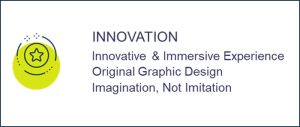
That has to be built in to the delivery partners’ thinking when they’re designing something. That goes for learners who are in any job role but I think for sales learners particularly, now is the time where they can actually take up the learning that they might not get an opportunity to do in the future when things get incredibly busy.
Barry: That gets us to a really important point. You’ve just referenced that there and that is the support that learners need now. We’re obviously through the APS here focusing on service learners but the point’s a wider one and applies to learners in general.
What kind of support do you believe that learners need to be able to optimize the available technologies at the moment from their organizations, from their colleagues, from whoever?
- Technology
- Good support mechanisms from managers
- Ensure it is fit for purpose
Anne: Well, obviously you’ve got your very basic ones, making sure they’ve got the right technology to be able to access learning at times and places that’s relevant to them. You’ve got to work with an extremely good delivery partner. Somebody that has the expertise that you’re looking for. Somebody that is that’s leading in that field and hence, Mercuri first to sales is certainly the one that we went to.
Also, making sure you’ve got a good support mechanism within the business which is sometimes difficult for sales.
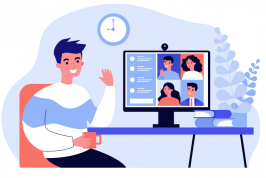
I mean we have a number of salespeople that are remote working home-based and we have international managers. It’s making sure that those managers, those mentors in the business really understand their roles and responsibilities in terms of people development. Making sure that your learners are engaged within the performance review process and ensure that any performance mechanisms that a business has got in terms of bonuses, incentive payments, et cetera are appropriate.
Things will change and you’ve got to make sure you continually look at those things to ensure that they are fit for purpose and they are recognizing the right things, the right drivers, the right successes for the business and for the individuals. So quite a strong support mechanism around any type of learner but I think particularly in the sales world that that’s even more important.
That would extend to something as basic as, for example, giving the learner the right amount of time to do the learning?
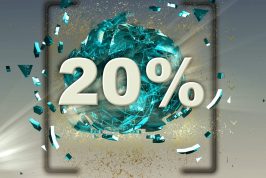
Anne: Absolutely. I mean obviously, on apprenticeships you have the designated 20% off the job. We actually give them an additional two-hour study time a week as well. But any learner and regardless of whether it’s commercial learning or privately sponsored learning or apprenticeships, for example, you have to have the right support and that means giving time. Whether it be in work time or whether it be in personal time is to be decided but if you’re a line manager you need them to know what you’re doing. Quite often you see somebody undertaking learning in complete isolation from their manager knowing what they’re doing. I think that’s such a shame because a manager can be such great support in giving access to evidence, access to opportunities, and access to learning time as well.
Barry: So that’s important. We need the technology availability, so we need the platforms because otherwise that’s going to diminish the learning experience for the individual and may also get a negative legacy reputation for the learning itself unjustified. You also need the management engagement, the management support and you need the time and available space to operate.
As a manager how can I see the payback for that investment that I’ve given in terms of time, space and collateral? How can we measure the effectiveness?
Anne: Well, I’m going to look at this obviously from an L&D perspective. For me, it’s about the growth of that individual.
- The changes in behaviour
- Improvement in performance
- Development of their soft skills and their customer engagement,
- Their understanding of broader concepts
- Their inclusion of all aspects of the products and services that an organization might do.
If you add them all together, it should then mean that that individual is taking on more responsibility, probably has more opportunities for promotion, maybe is actually changing job roles and is getting recognition for good work that they are doing.
“It’s all about the impact of learning on them as an individual but also on the team and the business as well.”

Barry: Okay. We should see a measurable payback and we shouldn’t be shy of looking for that or ways to measure that. That’s probably going to need a little bit of engagement from the organization as well. I mean, I certainly have the impression that sometimes corporately, companies believe that training is something that’s done to their people as opposed to something that they’re involved in themselves. Let’s let the training go on over there and then something will happen.
You really need the employer to be engaged, you need the company and the management and the leadership to be engaged in the process. That way, you can define the measurements, the KPIs, the performance improvement that you’re looking for. Is that correct?
Anne: Absolutely. I mean, otherwise, why are you doing it? I think part of it also is the expertise of managers needs to be looked at too. Does a manager understand the importance of this and how they can incorporate that learning in their support for that individual and their team management to hit the SLAs, the KPIs et cetera.
Certainly, I think managers need to be put into this equation very strongly.
If I am that learner on the cusp of making a decision to do something different from tomorrow, what would you recommend I do to embrace the new learning? What’s my first step?
Anne: I think you’ve got to make a decision about what you want from the learning. Is this about personal development, technical skills development, is it about your job or is it about you, as a person? Make those decisions. Talk to people around you. If you’ve got a really good HR business partner, they are really good to talk to, obviously, your line manager and perhaps people that have done training before.

Then, decide on what form of learning suits you. Some people engage really, really well with face-to-face, if that’s an option and others it’s the remote learning, but then it’s about the flexibilities that you require with it. When is the best time for you to learn in a day, in a week, in a month? That will enable you then to go out and start sourcing the learning that you want.
Barry: We could probably summarize that by saying that you have to do something, you can’t just think about it and do nothing. If you don’t change, nothing’s going to change. We really have to make an effort to take that first step out of the comfort zone.
What would you recommend our sales professionals on this call today need to be doing with regards to their learning given where we are?
“The first thing I would strongly suggest is that you do nothing. Just stop and pause and consider what you’re about to do today. Is it exactly the same as you did last Thursday or last Wednesday? Because if it is, it’s the wrong thing, honestly, because if you don’t do something different, nothing’s going to change.”
That is the real first step, to do nothing, to consider, pause and reflect, and then make a decision. The decision you make may be the wrong decision but at least you’ve made a decision and then you can change it. If it doesn’t work, do something else but don’t do the same thing you did yesterday.
Can you discuss the effectiveness of a remote training versus a traditional one at an external location? What Martin says is, he personally misses the interaction with other attendees which in the past would be during a coffee or a lunch break.
Anne: Yes. I mean, that’s obviously a big part of why people like face-to-face learning and workshops because it’s that networking piece, it’s that interaction with other learners who are experiencing something similar but in different contexts.
“Where remote learning is done really, really well is where that element has been replicated in that environment, so you have things like bulletin boards, you have scenario-driven opportunities where the learners can engage together to discuss things. You can actually split learners out into working groups, learning action sets and they can discuss and they can come up with things, they can go off and do research.”
It’s an imaginative way of recreating that ability to work collaboratively together and where we’ve– certainly as our learners have experienced it and where that works well, it’s been really rewarding. It doesn’t always work as well as that. Hence, it’s important that delivery organizations recognize the importance of the networking.

Barry: Can I just pick up on what Anne said and also the question I think which is from Martin. I think the important thing to say is no one’s suggesting that face-to-face learning is redundant, absolutely, not. I mean, it would be deeply ironic for me to say that considering Mercuri has been around for 60 years and been successful through that very channel.
I think it’s putting it in context that when there is face-to-face learning, that what is done in those sessions as practice, practice, practice. It’s not theoretical, it’s not the chalk and talk of old in the classroom or in the training room, it’s activity-based.
There is definitely a place for face-to-face learning. It just has to be that in the past where it might have been the predominant channel, it is now a channel which can provide probably a magnified version of what it did before. It’ll actually seem a lot more special now there’s a little bit less of it and if it’s in context with other things in the mix, it’ll shine and stand out, it’ll be something that’s quite remarkable in terms of an experience rather than the ordinary.
What are your thoughts on managing those sales professionals who just don’t buy into L&D?
Barry: Well, you probably won’t be managing them for that long because there won’t be around, they’ll die off. That’s it. I mean, end of question. If you don’t embrace change, your comfort zone will disappear and the entire world will be a panic zone for you. Anyone, if there’s any learning deniers out there, your days are numbered.
Ben: Anne, I presume you’d have a similar approach to that, would you not?
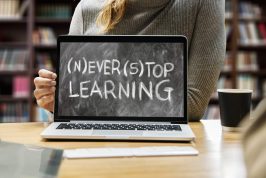
Anne: I do. I’m just sorry I’m just giggling away at Barry there. Yes, absolutely. I mean, we are a learning organization so obviously, we all talk about it and we follow it through, it is our mantra. In actual fact, I’ve just signed up to do an Egyptology course.
“Always learning, absolutely. Otherwise, you’ll fall behind.”
Barry: It’s interesting, Ben. Sorry, I’m just going to say– A lot of people will look for the echo of what they believe themselves. They’ll just live in an echo chamber of people reinforcing their belief about, “Well, that doesn’t work or learning doesn’t work.”
The facts are there to see, you make a change, you get a different result. I mean, you can’t deny that, it’s measurable. People who say, “Well, that’s not for me,” or, “I don’t like that,” that’s fine, that’s a free choice. You have to live with the consequences of those kinds of decisions. It’s very simple.
Ben: Absolutely. I think on a more supportive note as well in terms of a learner who’s not just projecting, there’s a great question here from James. If a team member doesn’t have a personal development plan but doesn’t really know what direction they want to develop him, how can we support that learner to try and find those answers? If I can pose that to you, Anne?
Anne: Yes, I mean, this is where L&D really comes into play. If you’re lucky enough to be in an organization where you have HR and L&D professionals, they’re your first port of call. They will help you sit down and work out what it is you wanting to achieve with your career, with your life, where you want to go. Mentors as well. I mean, there’s some really good mentoring schemes internally and also cross-company ones. I’m part of something called the 30% Club, which is London orientated. That’s helpful because it gives you a completely different perspective and enables you to really talk through where you are in your life and where it is you’d like to go and where you see yourself going and what skills and so on you need.
You need to find people that you can talk to that will help you to articulate your thoughts. They will then help you to see yourself in the right direction.
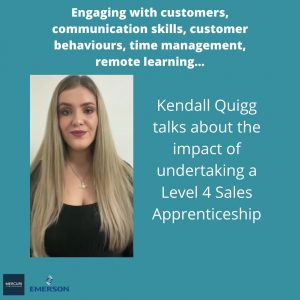
Barry: What’s been very interesting just on that subject is that through the apprenticeship, this Sales Executive Level 4 apprenticeship that we’ve been delivering recently, we’ve seen a lot of pieces of video collateral made by learners, which have been shared with their thoughts on what they’ve learned and how they’re applying it. Having that peer validation, which is not coming from the learning organization itself, but it’s coming from another learner, has much more credence sometimes because it’s undiluted, it’s raw, it’s what they’ve experienced and if it’s positive, people will tend to believe it. It’s a little bit like do you believe what someone posts on the internet or do you believe a newspaper or a television broadcast? It’s that kind of balance if you like. Listening to peer validation is very useful to pick up your direction as a learner.
Ben: Absolutely. Great question here from Dr. Tony Douglas. What Tony’s saying is I couldn’t agree more with that line manager for support. The essence of the question is, what happens when we just return to normal and we go back to being busy again? How can we encourage our managers to stick with that learning support mechanism? If I can direct that at Anne, if that’s okay.
Anne: I suppose I look at it in a positive way and that is, I would anticipate and hope that the culture that has been created through this time where people are more supportive of one another, that have come up with more creative ways to be supportive and are looking at training as a really good important tool for development, not just to fill gaps of time, but really, really important. I would expect that to continue.
Yes, it will continue in a different way, but now that managers have really understood the importance of this, I would expect them to keep that as a key part of their management toolkit.
Ben: A great question here from Prem and one I’d ask Barry if that’s okay.
Can you offer any advice on how to apply your sales learning and development in your current sales role to the current situation? How can we apply our learning where we are at the moment?
Barry: Well, that’s a great question, and it has a big challenge. One of the interesting things we’ve had to consider, Prem, as a company is how we support our sales team. We have a sales team, of course, and how do we keep them focused? How do we keep them busy? It is fairly challenging at the moment but what I would ask or suggest people do is go back to the first question that I posed, which is challenge what you actually do on a day-to-day basis and how effective that is.

Then stripping all the bits that are not so effective and see what you’ve got left. A lot of people might be quite stressed by doing that because they’ll find that a lot of things they do, maybe it’s difficult to see how effective they are but work from the bottom up. Find things that do work. It may be that you become a little bit more efficient now but when things get back to normal, you become a lot more efficient. You may only get some small incremental gains right now but this is a great team. When everyone’s got a bit of a chance to reflect on what has worked and what has not worked, to do that and do it in a very objective way because we’ll always find excuses for doing the things that we like to do.
I very often tell a story– I’m sure people are fed up with it, but what is sales an experience as a job? Is it 25 years of experience if you’re in sales for 25 years? Or is it one year of experience repeated 25 times because people learn most about their jobs in the first year or first two years, they continue to do the things that they’re good at and they find workarounds for the things that they’re not good at and then they tell themselves that those things don’t work. That is a self-fulfilling prophecy.
So be objective, be logical, look at what you do, drop the stuff that doesn’t work, and change the things that you need to change.
Ben: We’ve gone over the half an hour, so thank you, all those who have stayed on the call. I’ve got a comment here from Danielle I’d love to read to you both as well before we get our final comments. I think this is really important and really useful for those who are on the goal. Danielle has put it very simply, not so much a question but more of a helpful comment.
“I’m on my final year of doing a Chartered Management degree apprenticeship with the Open University. It has been the most toughest thing I’ve ever done, but also the most rewarding. I’ve pushed my comfort zone so many times, and at times, doing 40 hours a week learning while working full-time, and the support from Brother, her employer, for my work has been phenomenal. I have several mentors and a support network. I would highly recommend everyone to do some form of learning.”
Listener on the webinar
Brilliant, love it. Thank you, Danielle for that. Any comments from you before we close the webinar?
Anne: No, I think this has been incredibly important to do this at this time. Thank you so much for the questions because I think it’s really enabled us to explore things in more depth. Thank you very much.
Ben: Barry, my thanks to you for hosting, of course, but please, any closing comments from you?
Barry: No, just chin up, keep going, we’ll get there.
Ben: Absolutely. Well, look I’d like to thank, as Barry and Ann have done, everyone for being on the call this morning. It’s been an absolute pleasure to have your company this morning. To Barry’s point, let’s stop and reflect and hopefully start our learning journeys today but make sure that they’re different to what we were doing before or continue some great learning that’s going on out there as well.
